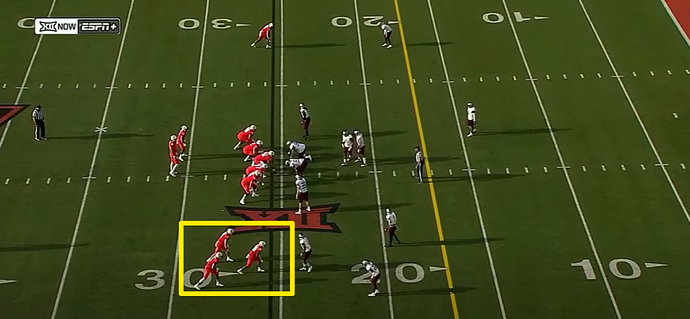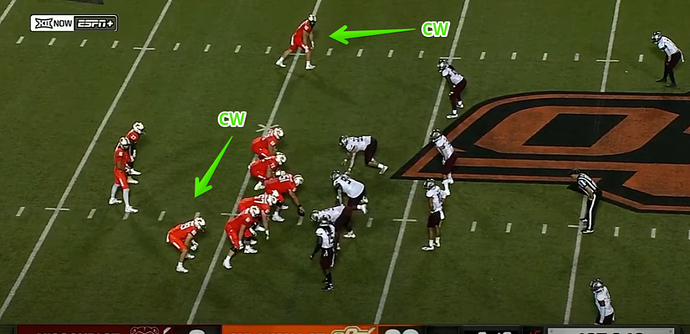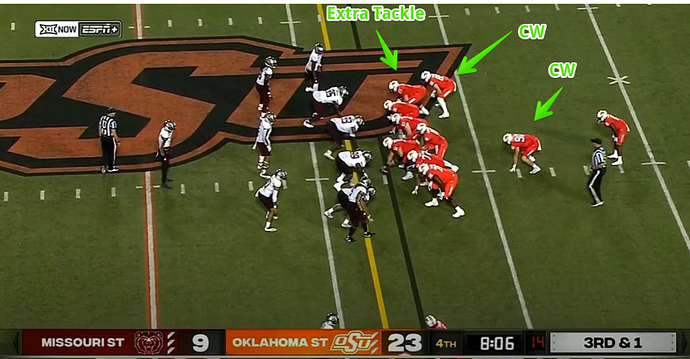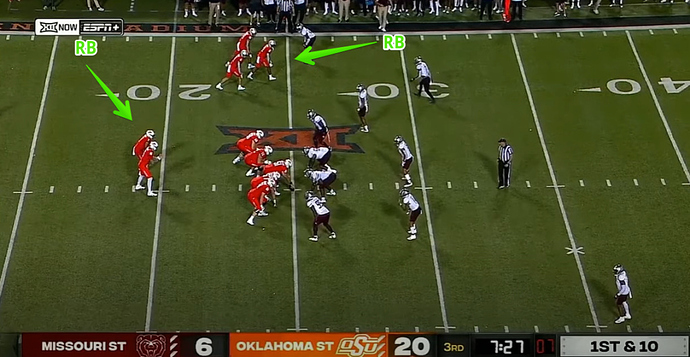By Dustin Ragusa
Oklahoma State started off the 2021 season with a 23-16 home victory over the Missouri State Bears. The Pokes led 20-3 at the end of the first half, and though the running game was struggling, quarterback Shane Illingworth was able to keep the offense afloat going 15-of-23 for 205 yards and a touchdown. However, OSU couldn't get much of anything going on that side of the ball when the Cowboys came out for the second half. The running game was nonexistent, and Illingworth wasn't as sharp as he was in the first two quarters.
The Cowboys didn't put up a single point in the third quarter, and added on just three points in the fourth, finishing with only a 120 yards of total offense in the second half. Now, OSU was missing their QB1 in Spencer Sanders, along with starting right guard Hunter Woodard and starting Cowboy back Logan Carter, but that's no excuse for the below average offensive performance from this team this past weekend.
For Part 1 of this week's three-part offensive film study, I'll take a look at the overall scheme and just what the Pokes were trying to accomplish against the MSU defense on Saturday.
Overall Scheme
From what we had heard coming into this season, OSU offensive coordinator Kasey Dunn was going to look to utilize more four-receiver sets. We saw that early in the game as the Pokes came out on the first drive in 10 personnel for the first seven plays of the game. Dunn went back to some of the bigger 12, and even 13 personnel sets at points in the game, but we did see a lot of these four WR looks. In addition, with four guys they feel comfortable with at running back, the Cowboys utilized several 20 personnel, or two-running back formations. See the entire personnel grouping breakout for this game below:
- 10 personnel: 30%
- 11 personnel: 42%
- 12 personnel: 9%
- 13 personnel: 7%
- 20 personnel: 12%
For comparative purposes, OSU used 10 personnel formations only 5% of the time in their bowl game against Miami last season. So, as you can see, Dunn is really trying to get as many of these talented young receivers on the field as he can.
Out of the 10 personnel groupings, the Cowboys went with a lot of Trips sets, or three receivers to one side of the formation. Out of Trips, Dunn seemed to favor this bunch receiver formation shown in the image below.
They had some success with some high-low, Smash route concepts out of this look which we'll get into more in Part 3 of this series.
Aside from Trips, Dunn utilized two-by-two receiver sets, sometimes starting in Trips and having receiver Braydon Johnson motion to the single receiver side before the snap. The Pokes ran a lot of zone-beating route concepts as Missouri State played a soft zone coverage throughout the majority of the game. In the rushing department, the Cowboys liked to go with the Draw play out of 10 personnel and ran this play several times on Saturday.
In 11 personnel, Dunn and company normally had the lone Cowboy back lined up in the H-back position, more often than not to the two-receiver side, which set them up in basically another form of Trips. See the image below.
Along with lining up as the H-back, Dunn moved the Cowboy back on the line of scrimmage in a typical tight end role, and there were a few occasions with the Cowboy back lined up in a split-back set with the lone running back. The Cowboys stuck to their inside zone running game out of 11p, but mixed in some outsize zone and gap scheme plays, along with one split zone run I saw (which was a staple of the running game a season ago).
When the offense went with 12p, it was mainly so they could go with the Diamond formation. Dunn mentioned after the game that he went into these more Cowboy back-heavy sets to try and spark the run game.
Dunn also went with both CW as tight ends on the LOS, and the one H-back/one slot receiver formation shown below.
OSU’s 13 personnel looks incorporated bringing in an extra tackle, and having a Cowboy back in a typical I-formation fullback position with Illingworth under center. We saw this at times from the Pokes last year, and they mainly look to run Power of this set.
Running back Jaylen Warren was able to find the end zone out of this formation, and I would expect Dunn goes to this near the goal line quite often this season.
Lastly, in 20 personnel groupings, the Cowboys went with their split-back, shotgun formation, but also incorporated a few looks with one of the running backs split out as a wide receiver, as you'll see in the following image.
It was also interesting that more often than not they threw the ball out of this formation, looking to get the RB swing pass going.
Play Calling
The game started out pass heavy, as the Pokes threw the ball on the first four plays of the game. As I mentioned above, the Bears were sinking back into zone coverage and were only bringing four defenders at the quarterback for pretty much the entirety of the first half. This allowed Dunn to scheme some nice zone-beating pass concepts in which Illingworth was normally able to take the snap and fire to his first progression. It worked well in the first half, and the offensive line was able to handle the light MSU pass rush.
However, in the running game, without Sanders as a running threat to occupy an extra defender, missing a good run-blocking lineman in Woodard and being without another solid blocker in Carter, the Cowboys just weren't able to get much going on the ground. Additionally, as the game progressed, the play-action passing game wasn't as effective as OSU wasn't able to get going in the rushing department.
The Cowboys finished with 40 passing attempts and 28 rushes, but I highly doubt this was the plan coming into the game. I would've thought Dunn would've wanted this to be much closer to a 50/50 split. In addition, the run-pass option (RPO) game was basically non-existent, and I'm guessing this was to take as much pressure as possible off Illingworth in reading the defense post-snap.
As I move into Parts 2 and 3 of this film breakdown, I'll dive deeper into both the running and passing games. Taking a deeper look at the offensive line, the running backs and the wide receiver play.





